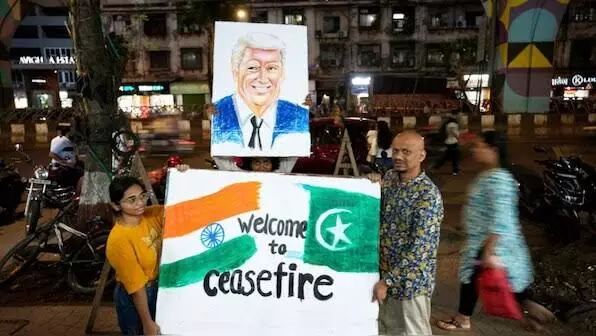Understanding the Ceasefire Between India and Pakistan: A Path to Peace or Just a Pause?

In recent developments, the world witnessed a significant breakthrough in the long-standing conflict between India and Pakistan. On May 10, 2025, after intense negotiations mediated by the United States, both nations agreed to a full and immediate ceasefire. This decision came at a critical time, following a series of military escalations that had alarmed the international community. But what does a ceasefire really mean, and how does it affect the dynamics between these two countries?
What is a Ceasefire?
A ceasefire, at its core, is an agreement between warring factions to stop hostilities. It’s a crucial step towards achieving lasting peace. In the context of India and Pakistan, this ceasefire means a halt to military actions across land, air, and sea. The Director Generals of Military Operations (DGMOs) from both sides confirmed the cessation of firing, emphasizing that this understanding was reached directly between the two nations. However, it is essential to note that this ceasefire is conditional, with both sides remaining vigilant about any future provocations.
The Role of International Mediation
The recent ceasefire was notably facilitated by U.S. President Donald Trump, who referred to himself as the “President of Peace.” This statement came after a series of diplomatic engagements involving high-ranking officials from both countries, including Prime Ministers Narendra Modi and Shehbaz Sharif. The involvement of a superpower like the United States highlights the significant role international mediation can play in conflict resolution. Historically, third-party interventions have often led to agreements that might not have been possible otherwise.
Historical Context of India-Pakistan Relations
To truly understand the impact of this ceasefire, one must look at the historical backdrop. The tensions between India and Pakistan date back to their partition in 1947, leading to several wars and ongoing skirmishes. The recent escalation was sparked by a terrorist attack in Jammu and Kashmir, which resulted in numerous casualties. India’s subsequent military operations, dubbed Operation Sindoor, further intensified the conflict. The ceasefire, therefore, is not just a pause in fighting; it represents a glimmer of hope for a more peaceful future.
Following the ceasefire announcement, both governments have reiterated their commitment to addressing terrorism and ensuring national security. India's External Affairs Minister, S. Jaishankar, emphasized the country’s uncompromising stance against terrorism, while Pakistan’s Foreign Minister, Ishaq Dar, expressed a desire for peaceful relations without compromising sovereignty.
This ceasefire opens the door for potential dialogues on various issues, including trade, border security, and counter-terrorism measures. A successful negotiation process could lead to a more comprehensive peace agreement, ultimately benefiting the people of both nations.
While the ceasefire is a welcome development, it’s essential for both nations to engage in constructive dialogue to address underlying issues. Sustaining this ceasefire will require continuous effort and commitment from both sides. The international community, too, must play a proactive role in facilitating peace talks. As we move forward, it’s crucial to remember that a ceasefire is just the beginning of a long journey towards lasting peace between India and Pakistan.
